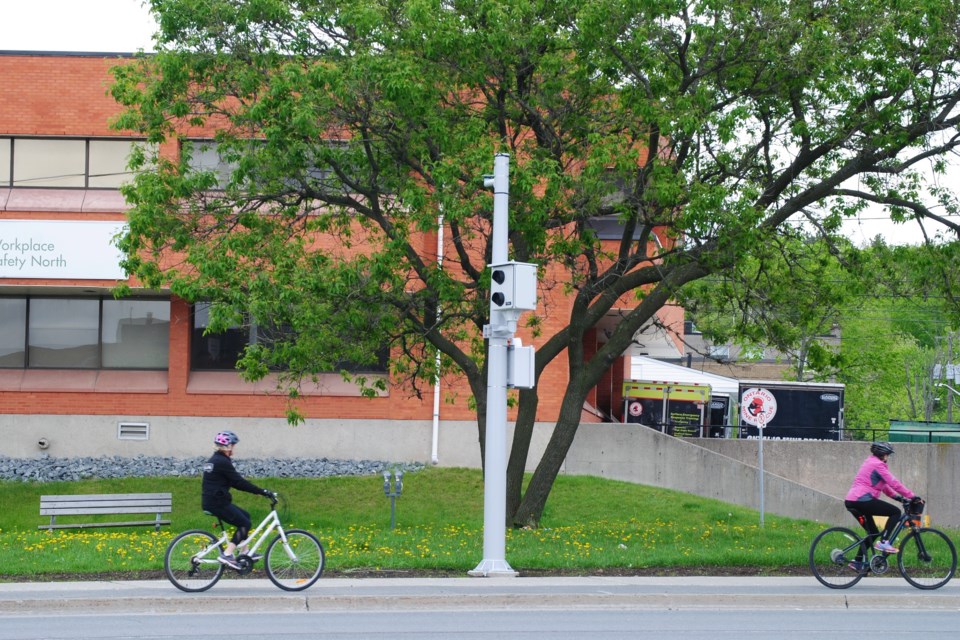Red-light cameras may not be available for cities the size of Timmins yet, but it's something that the city can start planning for, says the police chief.
Whether or not the cameras could be installed locally was brought up at the Nov. 9 Timmins Police Services Board meeting.
There hasn't been an official request for them. Coun. Steve Black, who is a police services board member, brought up the item to see if it's a possibility should the city want them, and what the process is.
“There’s been significant discussion in regards to elevated enforcement (for) speeding and for red lights. We’ve had presentations recently from companies that are able to do this. There’s structure involved and there’s also legislation that needs to be reviewed. I don’t think we’re that far away for cities our size to consider these options,” said Timmins Police chief Dan Foy.
Black said there are a couple of key intersections where people are pushing for the cameras.
“They’re constantly seeing vehicles blow through the intersection,” he said.
RELATED: Here are the top intersections for crashes so far this year
The red-light cameras include an automated system that detects and captures images of vehicles entering an intersection when the traffic light is red.
In Ontario, more than 300 red light cameras in six areas. While most are in Toronto and the GTA, there is one Northern Ontario system.
Last year, Greater Sudbury installed six cameras at different locations across the city. They were activated in September 2022.
Where red light cameras have been installed in other jurisdictions, Sudbury staff said serious right-angle collisions decreased by approximately 25 per cent. The number of minor, rear-end collisions tended to increase.
The estimated cost per year for the cameras in Sudbury is $500,000.
The fines are $325 — of which $265 goes to the city and $60 goes to the province for a victim surcharge fine. That means that if each camera catches one infraction per day the city breaks even.
Foy is also paying attention to what's happening in other locations.
In Barrie, for example, it's rolling out an automated speed enforcement system. This system identifies speeders, however, and not drivers going through red lights.
The cameras are expected to be live later this fall, with the city identifying two school zones for them to be in initially. The cameras will move to different community safety zones every few months.
The system uses a camera and a speed-measuring device to capture images of vehicles travelling faster than the posted speed limit in school or community safety zones. The ticket contains a digitized copy of the image and an enlargement of the plate portion. It is mailed to the registered licence-plate holder within 30 days of the offence, outlining the next steps and the cost of the associated fine.
SEE: Leadfoot? New cameras could help lower speeds on Barrie streets
If Timmins wants red-light cameras, Foy said that the program is getting close to being able to access.
"Cities bigger than Timmins are accessing that now. We need further study and work with engineering within the city to establish how far away we are from that. Based on the presentations I’ve been part of recently, I think it’s something we can start planning for, however, it may not be accessible yet for cities our size,” said Foy.
Black asked for clarification on how the process would work, starting with if the ask comes from the municipality or the police services board.
"It’s like people historically who wanted us to have a casino and we weren’t legally allowed to have a casino whether we wanted one or not. So it’s important just to inform the public. If Timmins isn’t an accepted region to have red light cameras yet, put it out there," he said.
If the cameras are coming, the city wouldn't have to take any action. Alternatively, if a lobby effort is needed to expand the program, resolutions can be passed to encourage it.
- With files from Sudbury.com and BarrieToday.com
